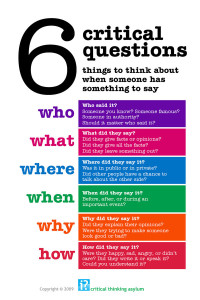
Group feedback, crowd sourcing, from the player base has done wonders for game development and I highly support it. I actively define my game purchases more based on the business model and transparency of a company than on the specifics of the current title. But even a devotee of communication such as myself must readily acknowledge that not all feedback is of equal quality.
The single largest hindrance I have encountered which burdens the use of feedback is the presentation. If your input is not clearly presented to those new to the ideas you are advocating it is substantially less likely that it will be understood or adopted.
In the interests of supporting more effective crowd sourced feedback – which I consider to be a win for both customers and companies within the gaming industry (and beyond actually, but that ranges a bit off topic) – I am presenting my observations regarding what works and what pitfalls to avoid. These observations have been made from over years of gaming and time as a community representative to various projects.
The Feedback Cycle
One of the most fundamental aspects of providing feedback effectively is to be conscious of the feedback cycle.
Consider ideas, challenge ideas, then commit to an idea.
It is far to easy to be distracted by “what if” or “should have” and thus waste time on useless, if accurate, feedback.
In the scope of Dust 514 there are various examples of things that could have been done better during the early cycle of development, but no matter how accurate it is to say “things would have been better if X were done from the start” that feedback isn’t actionable and thus holds no constructive merit.
Within the context of Dust 514 the cycle usually breaks down this way.
- Consider ideas – This happens internally. The development team looks at community ideas from the forums, trello, feedback e-mails et al contextualizes those with internal data analysis and screens the possibilities for technical pit falls. Community impact here is primarily going to be derived from clearly presented, data based, ideas offered free from emotional distortions of hyperbole.
- Challenge ideas – This is the most high profile aspect of public feedback, often delivered in the form of a feedback thread post from Rattati. Here is where a player can leverage their time and energy for greatest impact.
- Commit to an idea – This is the most frequent pitfall for players who desire to participate in the feedback process. Most choices will be less than a perfected ideal, that is the nature of reality. Further it is exceedingly rare that all parties involved in any choice consider the same singular option to be ideal so even when a choice meets ideal form for someone it is likely that there will be others who still object to it. These factors point to the sometimes frustrating but ultimately reasonable and necessary development practice of making a choice and following through on it, even if someone still objects to that choice (because it is almost assured that someone will in most cases). Focus on “forcing” the reversal of a development decision is more often than not a frustrating waste of time for both players and developers. Further its effects are detrimental on the rest of the feedback process obscuring the signal with noise and engendering dissonant feelings between those participating.
Presentation
Beyond feedback timing, the method of the feedback also plays a key role in how well understood an idea may be. The more diligent your use of critical thinking, reproducible testing, spreadsheets and visual examples, the more effective your feedback will be. However there is not always time to supply that level of detail and depth, in which case a simple focus on evading the major pitfalls is the best approach.
The quick and easy check list for quality feedback runs like this:
- Abstain from posting while emotional.
- Eschew use of sarcasm.
- Address your feedback to a subject not a person or group.
- Consider where your feedback fits in the idea, challenge, commit cycle.
- Test from more than one angle (e.g. run a shield HAV and a swarm launcher while preparing for feedback on shield vs swarm balance).
Keeping these concepts in mind will improve the accessibility of your idea the community and the likely hood it will be understood and considered by the development team.

“Eschew use of sarcasm.” but but but… HOW WILL I COMMUNICATE THEN? Q.Q
Just during feedback posts, the rest of the time you can run wild and free 🙂
Think of it as a way to contrast and highlight the difference for greater impact in the rest of your communications.
(After all, I hear tell that in the past there have been a couple of cases of confusion 😉 ).
Thank you for the article Cross. Isa Lucifer here!
good read